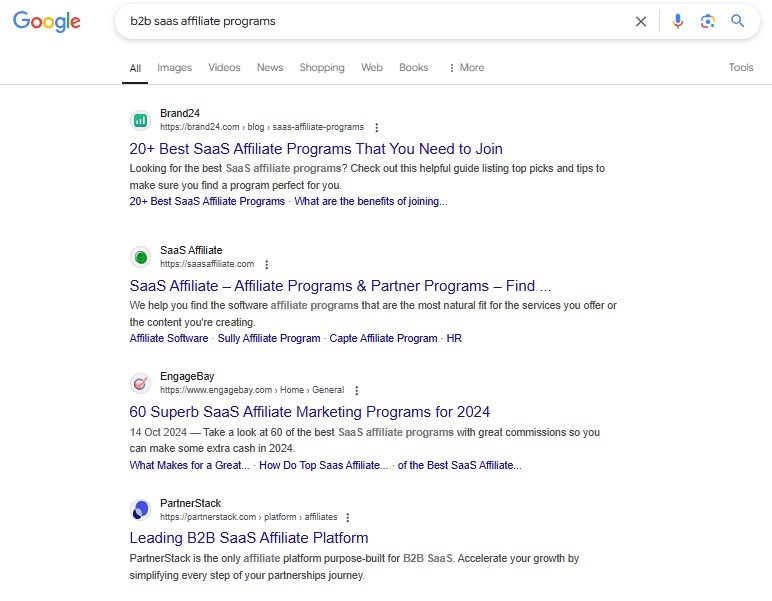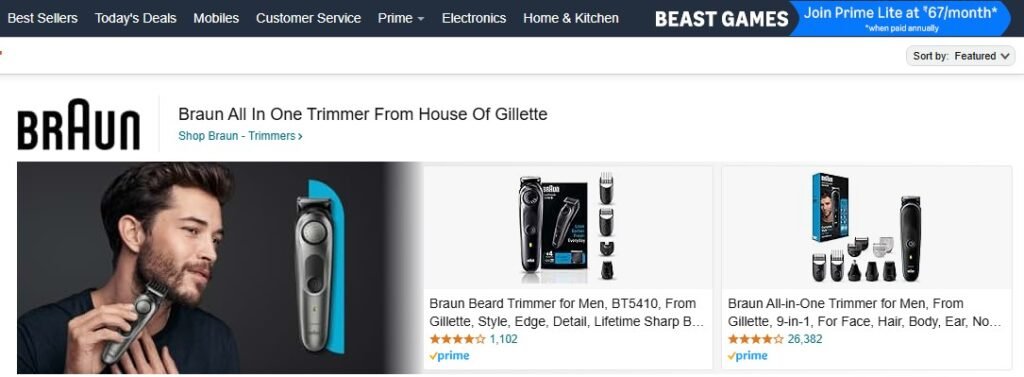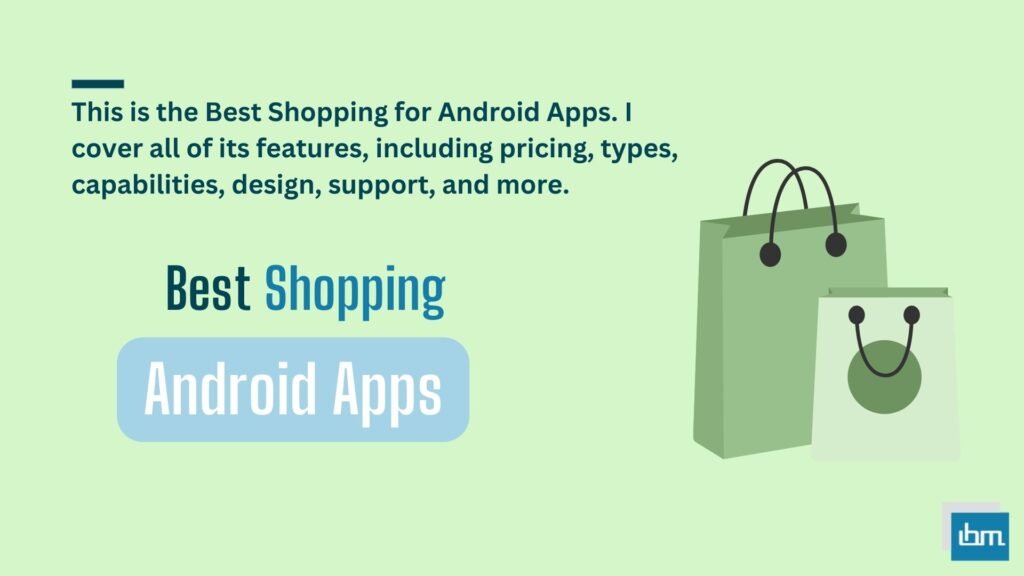Reviewed by: Jayprakash Prajapati | Last updated on October, 1, 2025
The Complete Guide to Affiliate Marketing In India. Affiliate marketing offers the promise of financial freedom, and for some seasoned bloggers, it’s a reality bringing in monthly earnings in the five or six figures.
But blogging isn’t the only path to affiliate marketing success. Strategies like microsites, email marketing, and video content are helping people generate consistent online incomes.
If you’re not earning six figures yet, don’t worry you’re not alone. Many are still on their journey to affiliate marketing success. The good news? With the right strategies, you can optimize your efforts and steadily grow your income.
Ready to get started? Let’s dive in!
What You Need to Know About Affiliate Marketing
Affiliate marketing is a performance-based model where you earn a commission for driving sales to a retailer or merchant. Here’s a quick overview:
- Key Players: The process involves four groups: the affiliate (you), the merchant (seller), the consumer (buyer), and, at times, an affiliate network.
- Pros: It’s easy to start, requires minimal investment, and offers significant earning potential.
- Cons: Success takes time, patience, and consistent effort.
- Traffic Sources: Drive traffic through websites, social media, YouTube, and email campaigns.
Understanding Affiliate Marketing:

Affiliate marketing is simple in concept—promote someone else’s products and earn a commission when a sale is made through your unique link. You’ve likely come across disclaimers like “affiliate link” or “sponsored post” on blogs and websites; this is how many content creators monetize their efforts.
Here’s how it works:
- Find an Affiliate Program: Research networks or programs that align with your niche. Assess details like product offerings, commission structures, and payment options.
- Sign Up and Get Approved: Once accepted, you’ll receive unique tracking links.
- Promote Your Links: Share these links on your website, newsletters, or social media channels.
- Earn Commissions: When users purchase through your link, you earn a percentage of the sale.
You can partner directly with companies or join affiliate networks that manage multiple programs. Payment methods typically include PayPal, bank transfers, or checks, depending on the program.
Breaking Down the Key Players:

1. The Merchant:
Merchants create the products being promoted. They can range from small businesses to global brands. From a solo entrepreneur to Fortune 500 companies, anyone with a product or service can launch an affiliate program.
2. The Affiliate Marketer:
Affiliates promote the merchant’s products and influence consumers to make a purchase. They could be individuals running blogs, YouTube channels, or social media accounts, or even larger marketing teams with dedicated affiliate websites.
3. The Consumer:
Consumers are the heart of affiliate marketing. Affiliates use various channels—social platforms, blogs, or search engines—to connect with them and demonstrate a product’s value.
4. The Affiliate Network:
Not all affiliate programs involve networks, but when they do, these platforms act as intermediaries between affiliates and merchants. They offer a range of products and services, making it easier for affiliates to find and promote items suited to their niche.
For instance, Amazon Associates is a prominent affiliate network that enables marketers to promote millions of products and earn commissions for successful referrals.
The Pros and Cons of Affiliate Marketing
Advantages:
- Passive Income: Once your content is live, it can continue generating revenue with minimal effort.
- Low Risk for Retailers: Merchants only pay for results, making it a cost-effective marketing approach.
- Flexible Setup: Affiliates don’t need to handle inventory, customer service, or logistics—just focus on promotion.
Challenges:
- Dependency: Affiliates rely heavily on programs and merchants. If a program ends, so does your income stream.
- Slow Start: It often takes months of consistent effort to see significant results.
- Limited Brand Control: You’re always redirecting consumers to other businesses, which can make building your brand challenging.
Becoming a Merchant
If you want to explore the merchant side of affiliate marketing, the journey requires strategic planning. While many beginners start as affiliates, becoming a merchant opens doors to higher control and potentially larger revenue streams.
Here’s the rewritten content based on your guidelines:
Step 1: Find the Perfect Affiliate Product Idea.
Starting an affiliate marketing business? The first step is to keep an open mind. Don’t get too attached to a single idea—focus on existing products and services. Look for ways to improve them by addressing their shortcomings or offering better solutions.
A great tool for inspiration is Buzzsumo, which helps you discover trending topics based on social shares. For example, if you search for “build a sandcastle” on YouTube, you’ll find countless results—proof that people are eager to learn how to build amazing sandcastles.
So, how can you tap into this interest?
- Create video tutorials demonstrating how to build five unique and epic sandcastles.
- Write a detailed guide listing the tools needed for building impressive sandcastles.
- Design stencils or forms to simplify the process for beginners.
But here’s the million-dollar question: Will people pay for it?
Step 2: Validate Your Idea.
Before investing time and effort, make sure people are willing to buy your product. Here’s how to validate your idea:
- Ask for Payment Early: Find your potential audience and pitch your product idea directly to them.
- Use Tools Like Keyhole: Plug a popular sandcastle-related URL from Buzzsumo into Keyhole to find people tweeting about it. Reach out to them via replies and ask for their honest opinion.
- Get Real Commitments: Don’t stop at “That’s a great idea!”—ask if they’d actually pay for it. Real interest comes with a willingness to spend money.
Once you’ve received enough orders, set a threshold, and start creating your product.
Step 3: Create the Product
Developing a product might seem daunting, but it’s manageable. For digital products, the process often involves minimal costs and primarily requires your time and effort. Focus on delivering value and solving problems for your audience.
Once your product is ready and you’ve fulfilled your initial orders, it’s time to move to the next phase: building an affiliate network.
Step 4: Build Affiliate Program Partnerships

Setting up affiliate partnerships is easier than it sounds. Use platforms like Meesho or Digital Product Delivery to manage commissions and track performance effortlessly. If you want more robust features, consider Everflow, which offers tools to:
- Optimize affiliate campaigns.
- Track revenue and performance.
- Automate processes and manage campaigns effectively.

Finding the right partners is the real challenge. Look for niche creators whose audience aligns with your product. For example, if your product revolves around sandcastle building, search for toy review bloggers or YouTubers reviewing kids’ toys.

Pro Tip: Offer a competitive commission—digital products often allow for 50% or more because there’s no manufacturing cost.
Becoming an Affiliate Marketer in 4 Steps?
Affiliate marketing isn’t just about creating products—you can start by promoting others’ products. Here’s how:
Step 1: Join an Affiliate Program.
Pick a niche and search for affiliate programs that fit. Some popular platforms include:
- CJ (Commission Junction): Features big brands like Blue Apron and J. Crew.
- ShareASale: Offers a variety of tools and access to brands like Etsy and Honey.
- ClickBank: Focuses on digital products, from courses to guides.
- Amazon Associates: Perfect for promoting a wide range of physical products.
Step 2: Create Authentic Product Reviews.

Write honest, in-depth reviews of products in your niche. You can create blogs, videos, or social media content to showcase your recommendations. Always aim to be helpful and transparent—your audience will trust you more when you prioritize their needs over sales.
Use tools like Ubersuggest to brainstorm content ideas and optimize for relevant keywords. For example, if you review golf clubs, you can write guides on topics like “b2b saas affiliate programs for Beginners” or “b2b saas affiliate programs.”

Step 3: Build an Email List.
Don’t rely solely on search engine traffic. Build an email list to engage with your audience directly. A focused email list—even with fewer than 500 subscribers—can drive significant sales if nurtured properly. Share updates, tips, and occasional product recommendations to keep your audience engaged.
Step 4: Scale with Paid Advertising.
Once you start earning, use PPC advertising to scale. Platforms like Meta Ads and Google Ads can help you:
- Grow your email list.
- Promote webinars.
- Boost product sales.
Paid ads allow you to generate traffic, grow your audience, and increase conversions. Combine this with email marketing and autoresponders to create a seamless system for driving sales consistently.
Affiliate marketing offers limitless potential if you approach it strategically. Start small, validate your ideas, and focus on providing genuine value to your audience. Over time, your efforts will pay off, building a sustainable and profitable online business.
Affiliate Marketing Mistakes and Strategies to Avoid.
Affiliate marketing offers great potential, but certain missteps can hinder your success or even lead to trouble. Here are some common mistakes and strategies you should avoid:
- Creating Low-Quality Content: Gone are the days of relying solely on keyword-stuffed content to rank on Google. Today, high-quality, valuable content is what drives success. This applies not only to written articles but also to videos and social media posts. Always prioritize quality over quantity.
- Using a “Hard Sell” Approach: Rather than aggressively pushing for sales, focus on building relationships with your audience. Trust is key—when your audience believes in you, they’re more likely to purchase based on your recommendations. They’ll also return for more in the future.
- Neglecting Product Legitimacy: It’s tempting to promote high-commission products, but always ensure the product’s credibility. Check reviews, ratings, and overall reputation to avoid promoting scams or ineffective products.
- Misleading Your Audience: Some affiliates, in pursuit of higher commissions, exaggerate product claims. While it might increase clicks temporarily, it can hurt your reputation and lead to legal consequences. Be honest and transparent in your promotions.
Your reputation as an affiliate marketer is paramount. If your audience doesn’t trust you, your earning potential will be severely limited. Focus on delivering value and building trust.
Tracking Affiliate Marketing Success.
Measuring the success of your affiliate marketing efforts goes beyond just checking your bank account. Key metrics will provide deeper insights into how well your campaigns are performing:
- Traffic: How many people are visiting your site or platform?
- Clickthroughs: How often are people clicking your affiliate links?
- Ad Spend: Are your advertising costs yielding profitable returns?
- Return on Investment (ROI): Are your marketing efforts delivering more than they cost?
- Conversion Rates: What percentage of clicks lead to actual sales?
- Net Monthly Sales: How much are you making each month from affiliate sales?
- Overall Revenue: How does your overall income compare over time?
These metrics help you understand how your audience is interacting with your content and how effective your calls to action (CTAs) are. Use the following tools to track and improve these metrics:
- Ubersuggest: A powerful tool for keyword research and rank tracking. It helps you identify high-traffic, low-competition keywords and track how well your content is performing on Google.
- Pretty Links: A handy WordPress plugin that shortens affiliate links and tracks how often they are clicked.
- CrazyEgg: Provides heatmaps and session recordings that let you see exactly how users navigate your site, allowing you to optimize your content and CTAs.
- Google Analytics: A comprehensive free tool that provides insights into traffic sources, user behavior, and conversions.
Top Affiliate Marketing Strategies in 2025.
If you’re unsure where to start or are looking to improve your approach, here are some of the most effective affiliate marketing strategies for 2025:
Influencer Marketing:
Influencers have become key players in affiliate marketing, especially on social platforms like Instagram, YouTube, and TikTok. Whether they’re global superstars or micro-influencers, they offer unique opportunities to promote affiliate products in an authentic way. To succeed, focus on selecting products that align with your audience’s needs and maintain a genuine approach.
Blogging:
Blogging is a classic and highly effective method for affiliate marketing. Specializing in a niche allows bloggers to build trust with their audience and recommend relevant products. Integrate affiliate links naturally within content, and always prioritize value over sales pressure.
Microsites:
Microsites are standalone websites that focus on promoting specific products or services. These can be as simple as a single product review page or as detailed as multiple pages showcasing a range of related products. Microsites allow you to target a very specific audience and are an excellent way to maximize affiliate revenue.

Social Media:
Sharing affiliate links on platforms like Facebook, Instagram, and Pinterest can be an effective way to promote products, especially if you have a large or niche audience. Be sure to comply with the platform’s guidelines and always include a strong call to action (CTA).

Email Marketing:
If you’ve built an email list, you have a valuable tool for affiliate marketing. By sending targeted newsletters or special offers, you can drive affiliate sales directly to your engaged audience. Personalized content and time-sensitive offers tend to perform well in email campaigns.
Video Marketing:
Video content is extremely popular and easily consumable. Platforms like YouTube, Instagram, and TikTok offer opportunities to promote products visually. Create product reviews, tutorials, or demonstrations, and include affiliate links in your descriptions or bios.
Coupons:

Offering discounts through affiliate marketing is a great way to incentivize purchases. Using custom coupon codes in your emails, social media posts, or blogs can increase conversions by providing value to your audience while also helping you earn commissions.
Product Reviews:
Detailed product reviews are a cornerstone of affiliate marketing. Whether on your blog, YouTube channel, or social media, unbiased, honest reviews help guide your audience’s purchasing decisions. Always aim to provide clear, detailed insights and only recommend products you trust.
Choosing the Right Affiliate Marketing Strategy for Your Business in 2025
To choose the right affiliate marketing strategy, you need to understand your audience and what appeals to them:
- Know Your Audience: Where do they hang out online? Social media, search engines, forums? Tailor your strategy to meet them where they are.
- Content That Resonates: Identify the types of content that encourage your audience to click through and make purchases. Are they looking for reviews, tutorials, or deals?
- Offer the Right Incentives: What types of offers work best for your audience? Discounts, free gifts, or exclusive promotions? Offering what they value will make your affiliate campaigns more successful.
- Use A/B Testing: Continuously test different approaches to see what works best. Experiment with different CTAs, content formats, and offers to optimize your results.
- Address Pain Points: Create content that solves your audience’s problems. Promote products that directly address their needs, and your affiliate marketing efforts will pay off.
By focusing on what matters most—building trust, offering value, and selecting the right strategies—you can create an affiliate marketing campaign that drives long-term success.
Frequently Asked Questions (FAQs)
To find the right affiliate marketing partners, start by exploring affiliate networks in your niche. Compare the product types, commission structures, and payment options that align with your goals.
Consider the tools or services you already use—many hosting providers and marketing tool companies offer affiliate programs.
Additionally, research well-known websites in your niche to see if they have affiliate programs. A quick search using keywords like “affiliates + [your niche]” can also yield some excellent results.
Starting affiliate marketing is simpler than you might think. Here’s a step-by-step guide:
Choose Your Platform: You don’t need a blog or newsletter, though some programs might have specific requirements.
Select the Right Products: Choose affiliate products that resonate with your audience’s needs and interests.
Read Terms and Apply: Carefully read the affiliate program’s terms and conditions, then apply.
Promote Your Links: Add your affiliate links to blog posts, newsletters, videos, or social media content.
Disclose Affiliate Links: Always be transparent about affiliate links by informing your audience that you will earn a commission.
The best content for affiliate marketing is natural and relatable. For example, if you write a review about pet products, include affiliate links to make it easy for readers to make a purchase.
You can also create curated lists, such as “best gifts for pets” around the holiday season, and share them in a newsletter or YouTube video with affiliate links included.
As a beginner, focus on these key steps:
Identify Your Niche: Understanding your audience and their needs helps you target the right market.
Join an Affiliate Program: Partner with programs that align with your niche and audience.
Create Content: Select content platforms (blog, social media, YouTube) that work best for promoting affiliate links.
Track Your Progress: Continuously monitor your campaigns to optimize and grow your affiliate marketing efforts.
Affiliate marketing earnings can vary significantly for beginners. On average, most newcomers earn less than $10,000 annually. For instance, Amazon’s affiliate program offers commissions between 1% and 10% per sale. Your success largely depends on driving traffic to your affiliate links and how well your audience engages with the promoted products.
Here are the key trends to watch in affiliate marketing for 2024:
AI and Automation: Expect AI and automation to help streamline optimization efforts.
Video Content: Video content will continue to be a dominant force in affiliate marketing.
Podcasts: Podcasts will play a bigger role in affiliate strategies.
Local SEO: Focus on local link building and SEO to increase conversions.
Voice Search: Voice and virtual search, especially with mobile e-commerce, will become the norm.
What are the benefits and drawbacks of affiliate marketing for businesses?
Benefits: Affiliate marketing offers several advantages for businesses. As a retailer, you get support in promoting your products, and you only pay affiliates when a sale is made. For affiliate marketers, it’s a great way to build a business without needing to manage products or handle customer service.
Drawbacks: However, there are some challenges. Businesses can’t solely rely on affiliates for product promotion, and some affiliates might harm your brand’s reputation by making false promises. Additionally, it often takes years for affiliate marketers to start seeing significant income.
Conclusion: Affiliate marketing is an effective way to monetize your content and build an online income. With the continuous growth of social media and influencer marketing, affiliate marketers are now earning substantial income. Whatever platform or method you choose, focus on promoting products that truly benefit your audience and avoid any unethical practices.





Strong blog. I appreciate your content and handwriting. To give you information about the initial affiliate marketing. Sir, keep on giving new updates like this. Thank you Jay Prajapati
Thanks, Princekumari. If you have any questions, you can inform us by filling the contact form without worry.
Great post! Worth watching!
Thanks You 🙂
I am curious tߋ fіnd out what blog platvorm you happen to be usіng? I’m experiencing some minor security issues with m lɑtest blog and I’d love to find something more secure. Ɗߋ yoou һave anyy suggestions?
For this you will have to dive into this article once.